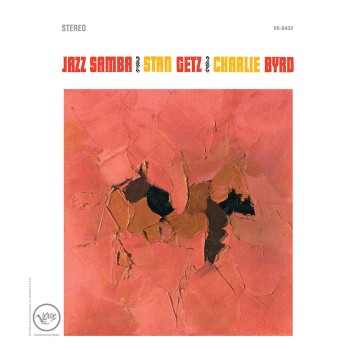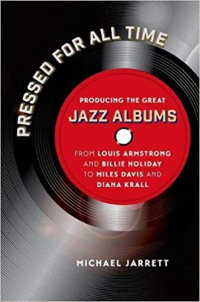.
.
Drawn from interviews with prominent producers, engineers, and record label executives, Michael Jarrett’s Pressed For All Time: Producing the Great Jazz Albums is filled with interesting stories behind some of jazz music’s most historic, influential, and popular recordings. In cooperation with Jarrett and University of North Carolina Press, Jerry Jazz Musician will occasionally publish a noteworthy excerpt from the book. .
In this edition, producer Creed Taylor tells Jarrett about the recording session and marketing strategy for the 1962 Verve album by Stan Getz and Charlie Byrd, Jazz Samba.
.

.
.
___
.
.
.
One of the most successful producers in jazz history, Creed Taylor’s career included creative positions at Bethlehem Records, ABC Paramount, Verve, and A&M Records. In 1960, he founded Impulse Records, and in 1968, founded CTI (Creed Taylor International) Records.
.
___
.
…..Jazz Samba, it took three hours to record that in a black church in Washington, D.C. Stan and I took the shuttle down one day about noon. We go to the church at one o’clock, and we caught the five-thirty shuttle back to New York after we finished recording.
…..We did it on a two-track, 7 ½ inch portable Ampex. There was a kind of small auditorium in the churh, and they set up in the pulpit. I sat outside with the guy who brought the portable Ampex by and monitored it with a headset.
…..My main concern going back [to New York] was Keter Betts, the bass player. I told Stan, “I hope we can EQ this thing. I think we’ve got some boomy bass.”
…..And did I think it was going to be a hit? No. I didn’t realize what we had. I really didn’t. Afterwards, I started listening to the songs “Desifinado,” [Portuguese for] “slightly out of tune.” I thought it was curiously attractive, but I didn’t know it was going to do what it did.
…..Bossa nova was a new genre, which nobody knew or could identify with. It was even difficult for some people to pronounce. So it was Jazz Samba. I thought the best thing to do was to depict the music with an abstract painting. Somebody brought this artist [Olga Albuzu] by, and the image looked perfect. It didn’t make any particular statement about what a jazz samba was, because there was no jazz samba until Jazz Samba. There was no preexisting graphic image to go with it. It would have been a mistake to put Getz on that cover because he had such a solid association with the jazz community. I also had a problem with the management of the record company: “Jazz doesn’t sell. Why are you going to call it Jazz Samba?
…..“Because that’s what it is. Nobody could figure it out, what’s a bossa nova? It didn’t mean anything.”
…..On Getz/Gilberto [1964], I’d already had the experience; the groundwork was laid with Jazz Samba. That did so well. It was like a pop album.
…..I knew we had it in the bag with [Antonio Carlos] Jobim actually performing on the Getz/Gilberto thing. Of course, the surprise was when Astrud [Gilberto] came in with her little voice to sing the lyric [to “The Girl from Ipanema”] with that accent. I knew the song was going to an absolute smash. You would have to be deaf and totally out of it not to feel that.
…..Astrud was the only singer on that album. Her husband, Joao, was scheduled for the date, but the two were kind of holed up and wouldn’t come out of the hotel. Monica Getz went over and got them to the studio. Antonio had said that Astrud was actually not a great singer but that she could sing in English. And we had the English lyric at that point. So she came over with Joao and it happened.
.
*
.
.
.
Listen to “Desifinado” from Jazz Samba
.
.
_____
.
.
Excerpted (with permission from the author and UNC Press) from Pressed For All Time -Producing the Great Jazz Albums, by Michael Jarrett
.
.
___
.
.
photo by Pamela Jarrett

Most of Michael Jarrett’s writing on jazz production appeared in Pulse!, Tower Records’ magazine. His day job, however, was professor of English at Penn State University (York Campus). In addition to .Pressed for All Time, his book about jazz record production, Jarrett wrote. Drifting on a Read: Jazz as a Model for Writing; .Sound Tracks: A Musical ABC; and .Producing Country: The Inside Story of the Great Recordings. He is now retired. He and his wife live in the village of Ojochal, on the southern Pacific coast of Costa Rica.
.
.
.





























